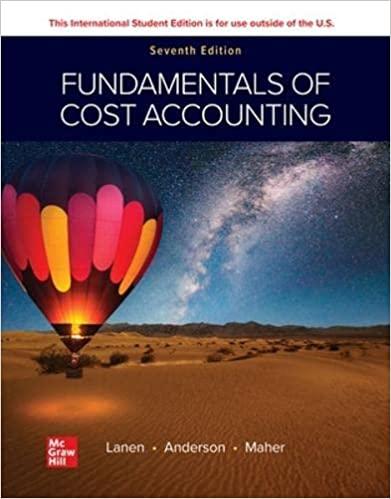Answered step by step
Verified Expert Solution
Question
1 Approved Answer
Question: In the realm of accounting, the fundamental accounting equation is a cornerstone that underpins financial transactions and record-keeping. This equation serves as a foundation

Question: In the realm of accounting, the fundamental accounting equation is a cornerstone that underpins financial transactions and record-keeping. This equation serves as a foundation for understanding a company's financial position. Please fill in the blanks to complete the accounting equation and provide a brief explanation of each component: Assets = Liabilities + Assets: Assets are the resources and economic benefits owned or controlled by a business. These can include cash, accounts receivable, inventory, property, equipment, and more. They are divided into two main categories: current assets (those expected to be converted to cash within one year) and non-current assets (long-term assets). Liabilities: Liabilities represent the company's financial obligations, debts, or claims against its resources. These can include loans, accounts payable, bonds payable, and accrued expenses. Like assets, liabilities are classified into current liabilities (obligations due within one year) and long-term liabilities (obligations due in more than one year). Owner's Equity: Owner's equity, also known as shareholders' equity or simply equity, is the third component of the accounting equation. This represents the owners' residual interest in the business after deducting liabilities from assets. In essence, it is what's left for the owners if all the company's debts are settled. Owner's equity consists of various elements, such as common stock, retained earnings, and additional paid-in capital. So, to balance the accounting equation, the missing term is Owner's Equity. This is the owners' claim on the assets after all the company's obligations (liabilities) are accounted for. Understanding this equation is crucial for accurately recording and interpreting financial transactions, as it ensures that the balance sheet remains in equilibrium, reflecting the true financial state of the business. Please fill in the blank with "Owner's Equity" to complete the accounting equation, and feel free to ask any further questions or seek clarification if needed
Step by Step Solution
There are 3 Steps involved in it
Step: 1

Get Instant Access to Expert-Tailored Solutions
See step-by-step solutions with expert insights and AI powered tools for academic success
Step: 2

Step: 3

Ace Your Homework with AI
Get the answers you need in no time with our AI-driven, step-by-step assistance
Get Started


